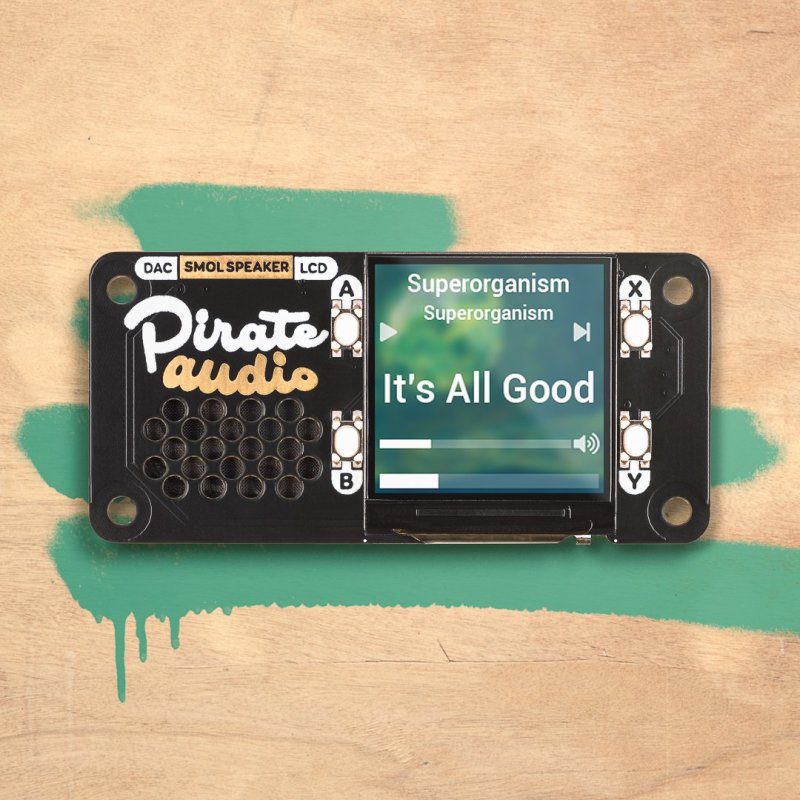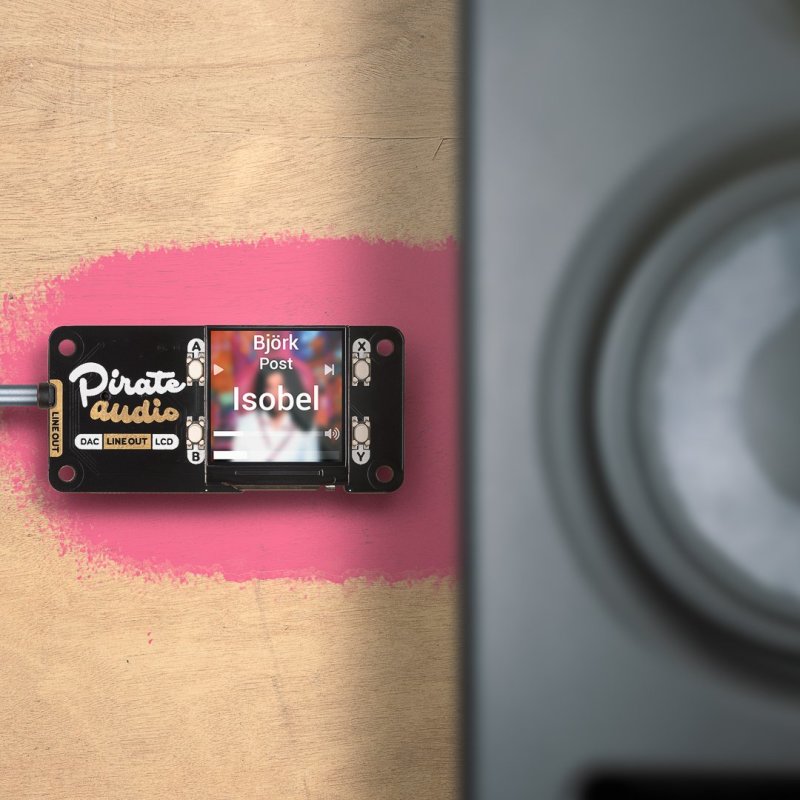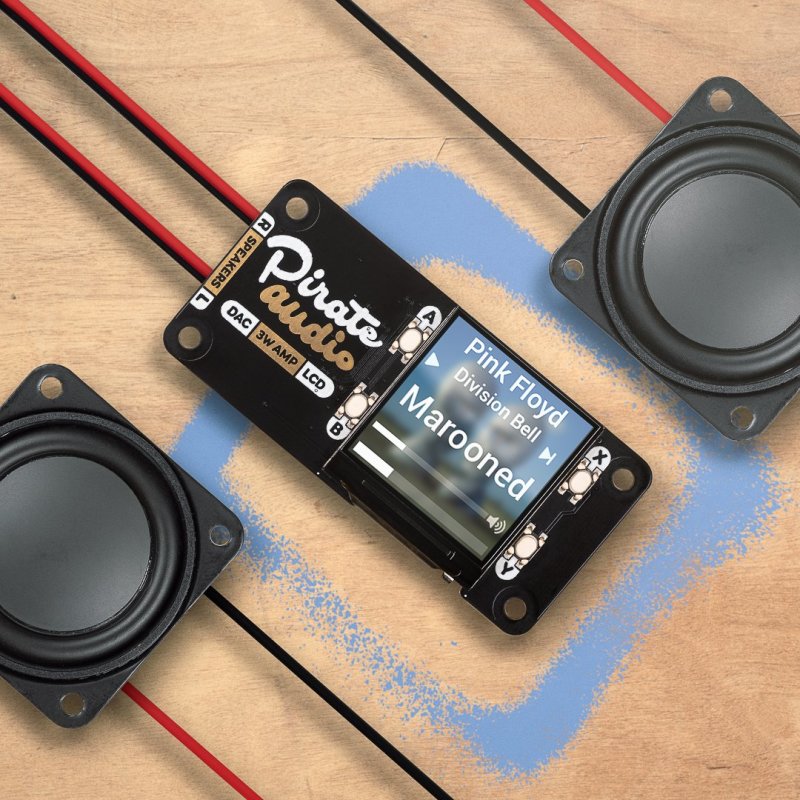Raspberry Pi has its fair share of DAC audio boards offering high-quality sound output, but Pimoroni’s new Pirate Audio range adds a mini LCD to show music track details and album art. In this review we’re focusing on the Pirate Audio Headphone Amp, but we also tried out the other three models: Line‑out, 3W Stereo Amp, and Speaker. We understand that another model is also set to be added to the range soon.
All the boards have the same slimline pHAT form factor that fits perfectly onto a Raspberry Pi Zero, although they’ll work with any 40-pin model. The main difference between them is how the sound is processed and output. On the Headphone Amp, audio is amplified and then output via a 3.5 mm jack – just plug in your wired headphones or earbuds. The positioning of the jack on the side of the board means you may need to take your Raspberry Pi out of its case, or raise it up using a booster header.
Setting it up
Getting started with Pirate Audio wasn’t quite as simple as we anticipated, although an online guide (magpi.cc/pirateaudioguide) has since appeared that should prove very helpful. Installing the default software itself is simple enough, by entering three commands in a Terminal window. This does everything needed to configure the DAC and enable SPI for the LCD.
Based around the Mopidy music server daemon, the software enables you to play local music files or stream tracks from Spotify, although you’ll need a premium account for that. The Spotify extension for Mopidy is installed automatically, along with one for the user-friendly Iris web interface.
The latter proves essential as you’ll need to use it to actually start playing music on the board. Point a web browser to your Raspberry Pi’s IP address appended with ‘:6680/iris’ to access the web interface – you can do this from another computer or on the same Raspberry Pi if it’s connected to a monitor.
Accessing local media files required a change to the Mopidy config file to reassign the local directory from the default to our Music folder, then running a local scan in Iris to find the files.
For Spotify streaming, you’ll first need to authorise the device via the Mopidy website, alter the config file to enable Spotify and add your credentials, and then sign in again via Iris to start using Spotify from its interface.
Tip: if you still get an error when trying to play files, try restarting the server from Iris’s settings.
Music to our ears
The good news is that once you get everything set up, the Pirate Audio board’s 24-bit, 192kHz DAC delivers excellent sound quality with a warm tone, plenty of fine detail, and sufficient bass for our ears. At first, we found it a bit too loud – until we flicked the switch on the rear of the board from high- to low-gain (recommended in most cases).
The volume level can be adjusted using two tiny control buttons on either side of the LCD. The other two buttons present are for play/pause and skip to next track in the queue, album, or playlist – there’s no way of returning to previous songs unless you use the web interface.
We do love that built-in LCD, though, which shows you the track details on a background of the blurred album artwork, with a song progress bar at the bottom.
Pirate Audio range
Line-Out
Aimed for use with powered speakers or by connecting to a hi-fi line input, it features line-level digital audio and a 3.5 mm stereo jack.
3W Stereo Amp
This board features four tiny push-fit terminals on the rear to attach wires from passive speakers. There’s also a switch for stereo and mixed-down mono modes.
Speaker
At only 1W, the small built-in speaker isn’t very powerful and sounds rather tinny, but this board is ideal when you need integral audio for a portable project.
Specifications
Audio processing:
PCM5100A DAC (24-bit / 192kHz), PAM8908 amplifier chip
Data bus:
I2S for audio, SPI for LCD
Display:
240×240 IPS colour LCD
Audio out:
3.5 mm stereo jack
Controls:
four tactile buttons
Verdict
A little tricky to get it all working, but once set up, the resulting audio is of excellent quality and the LCD is great for showing track details and artwork.
9/10



Schreibe einen Kommentar
Du musst angemeldet sein, um einen Kommentar abzugeben.